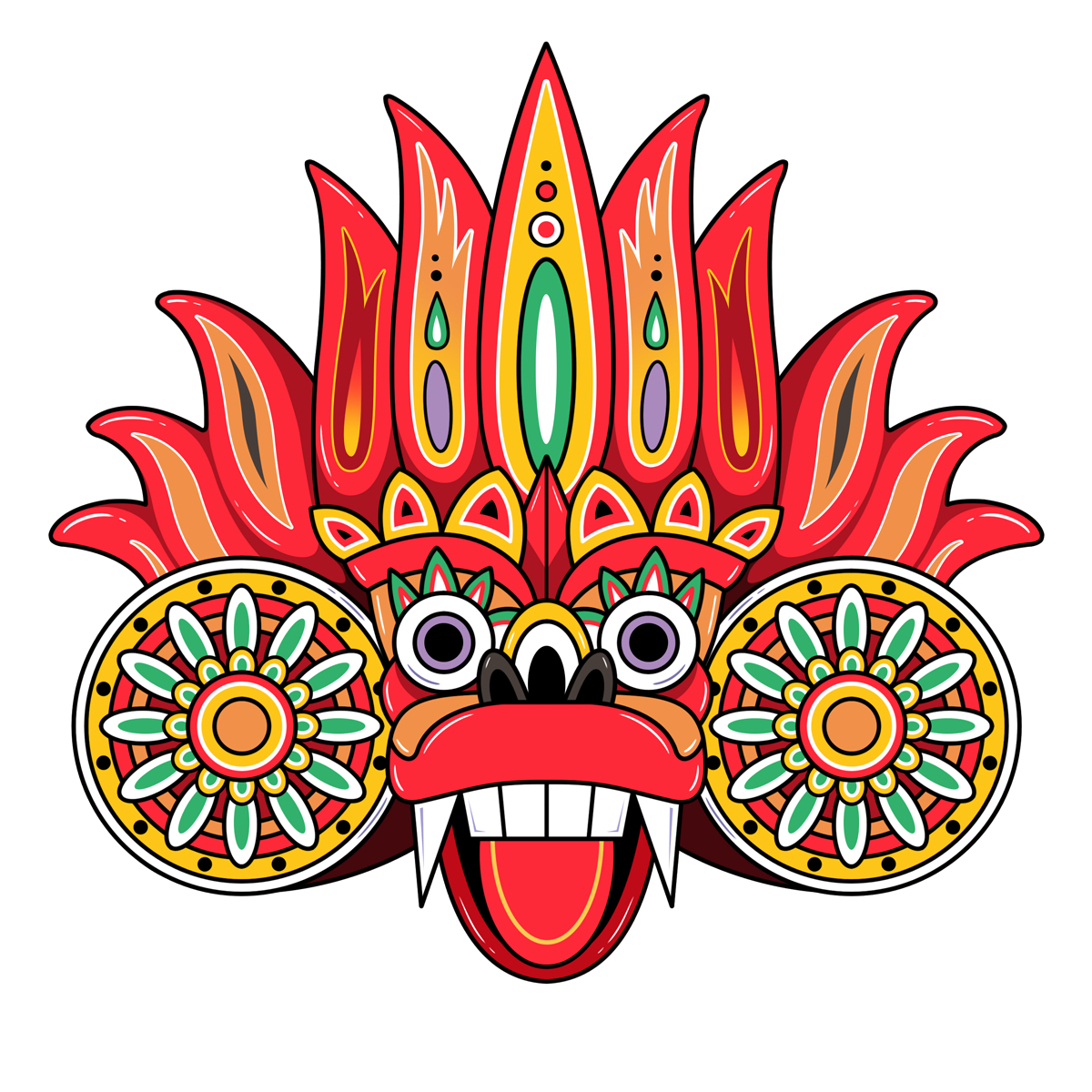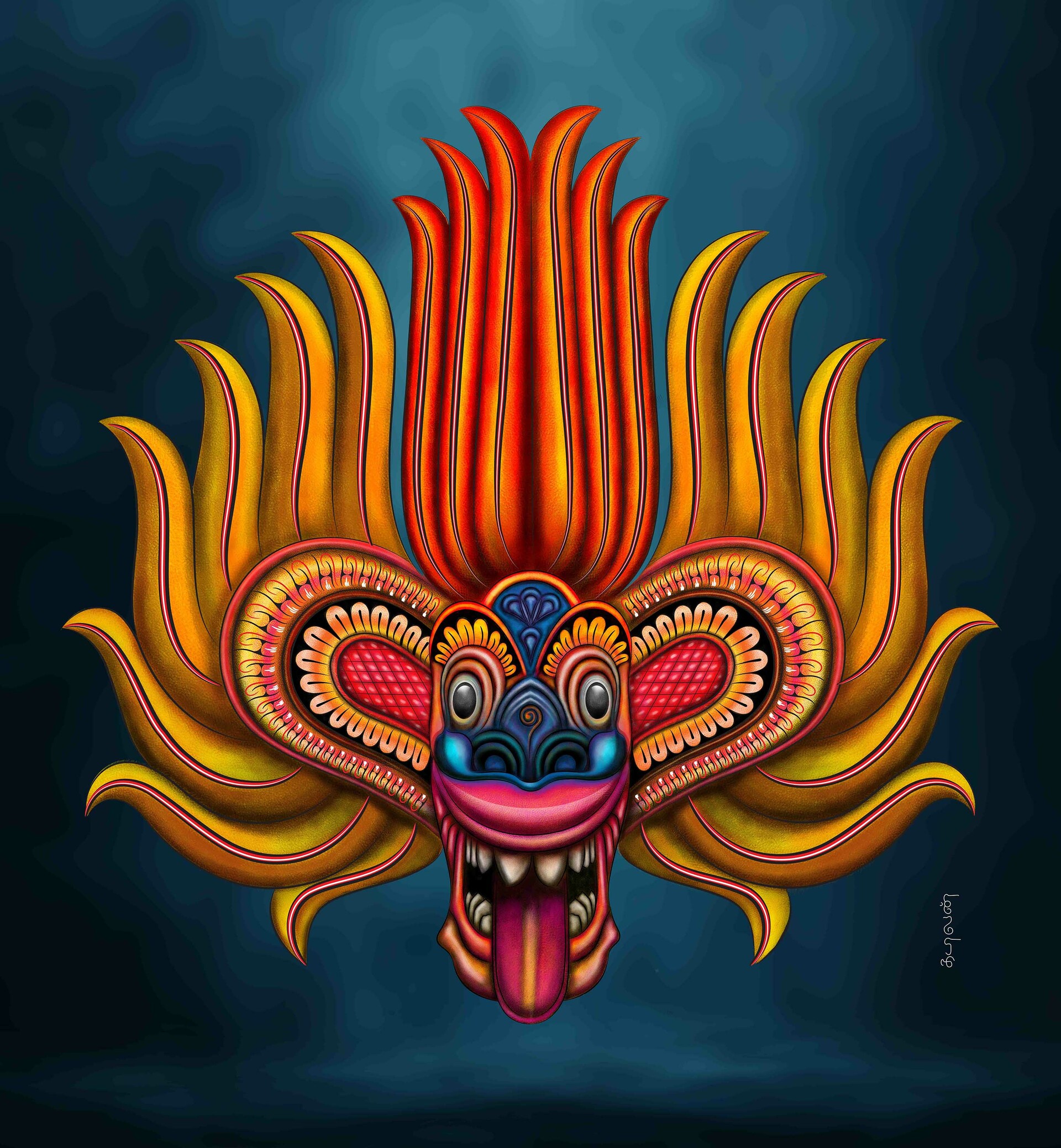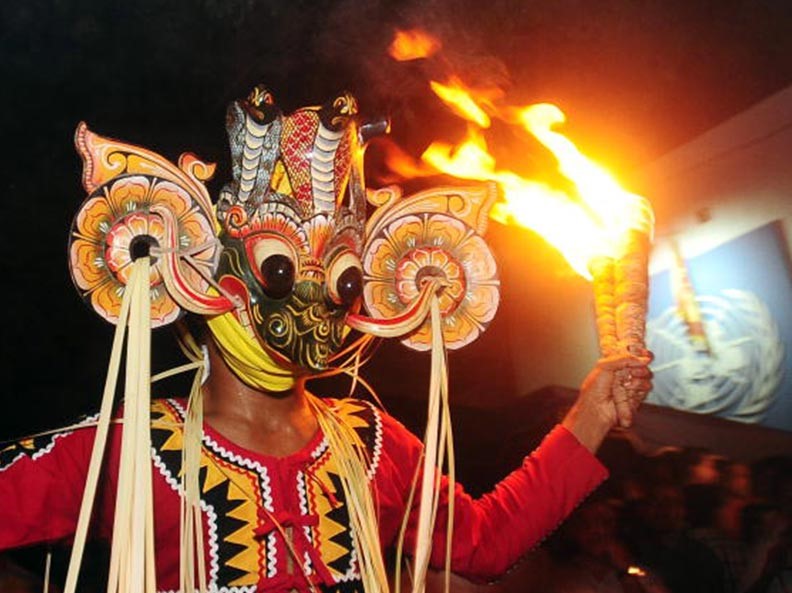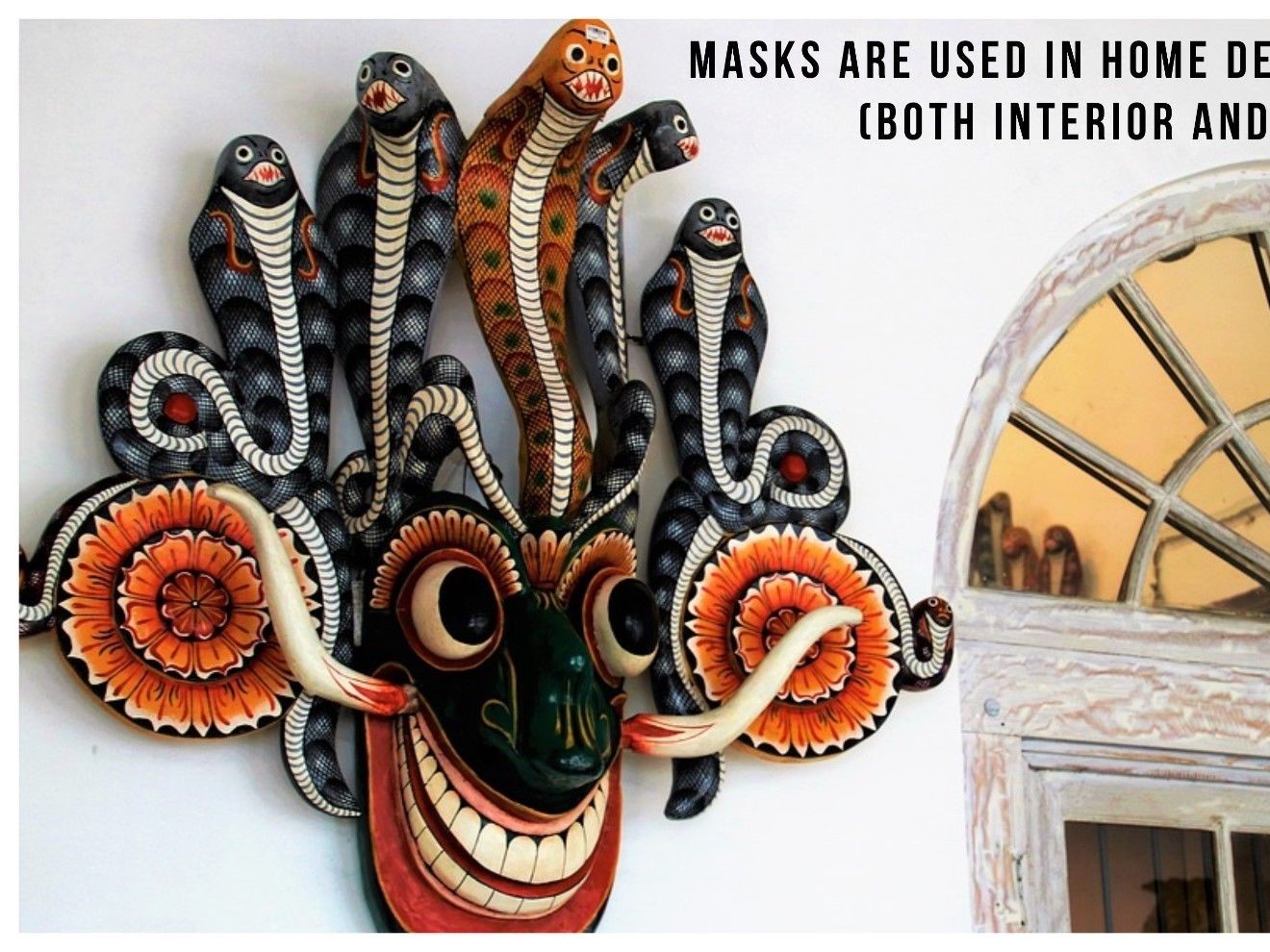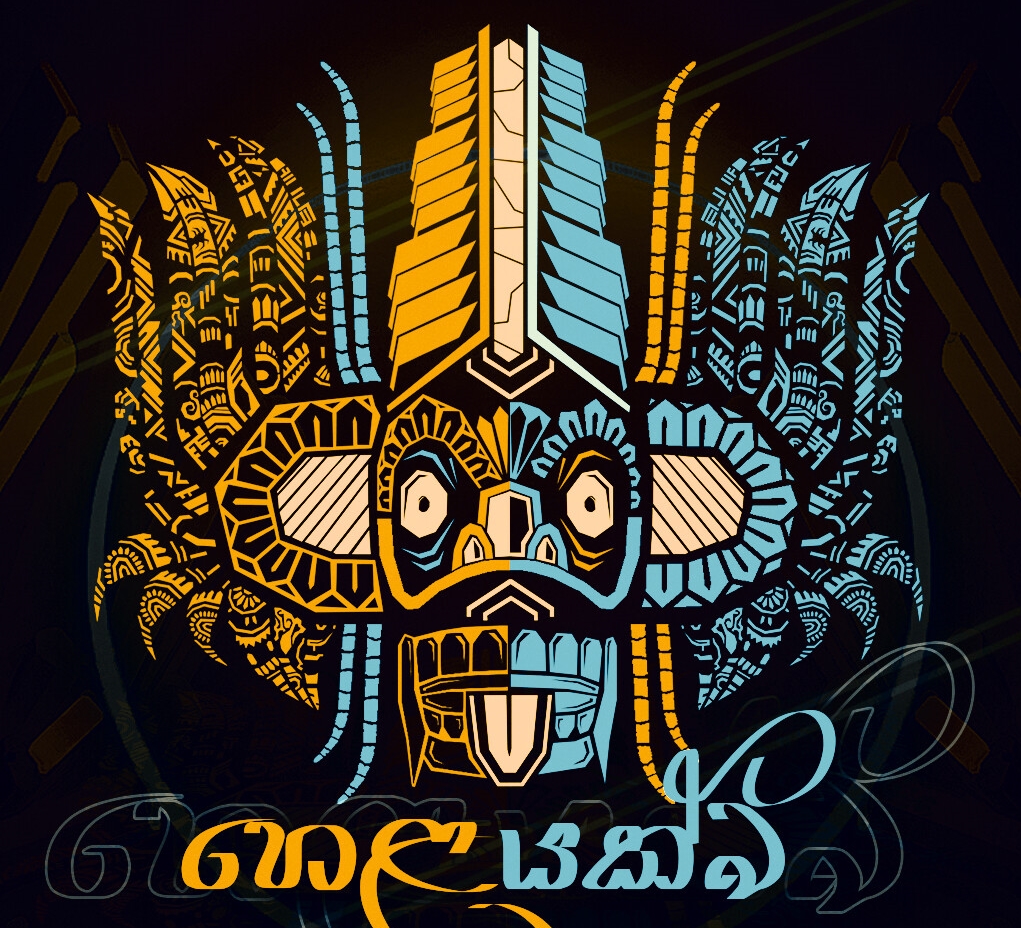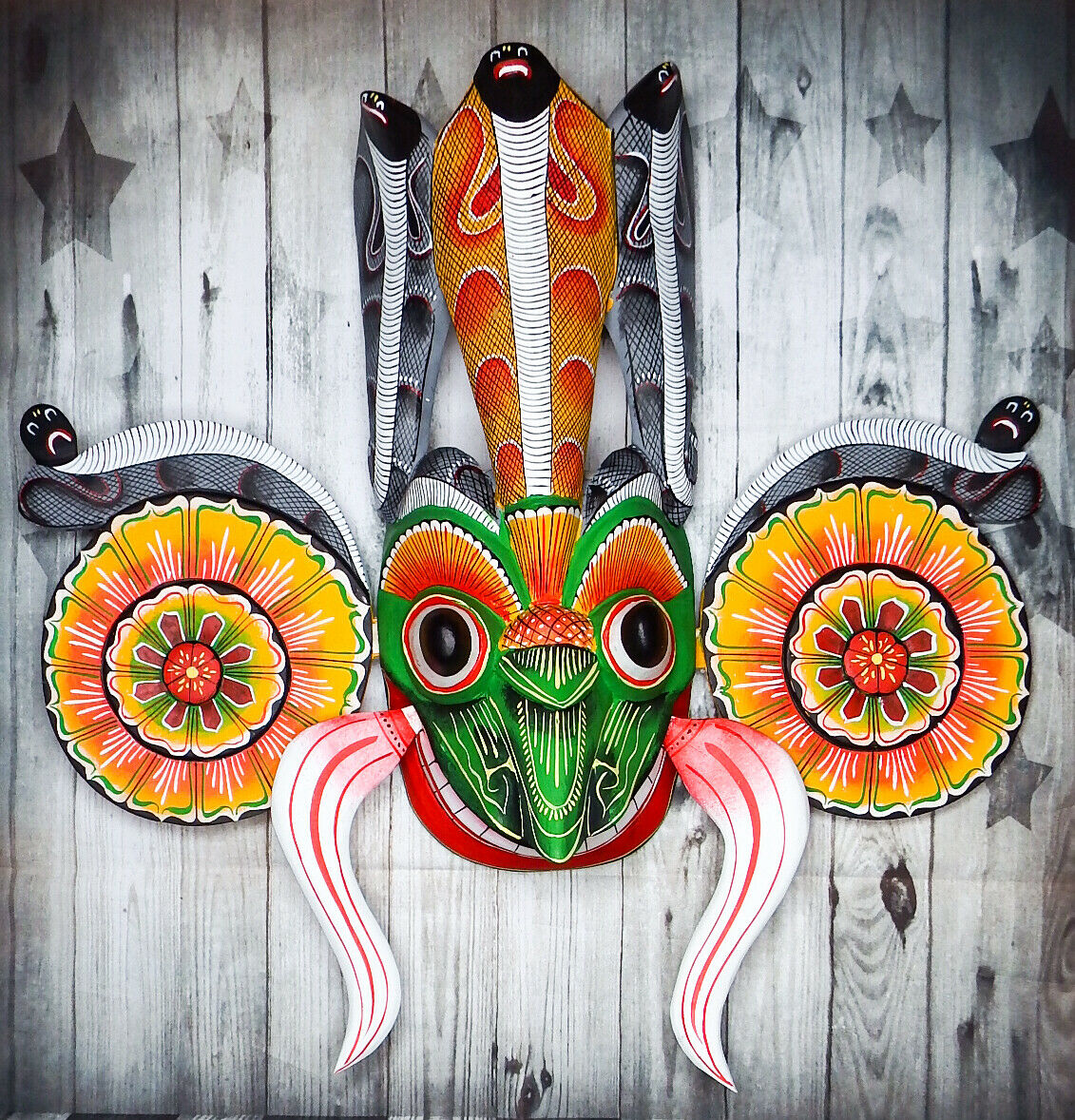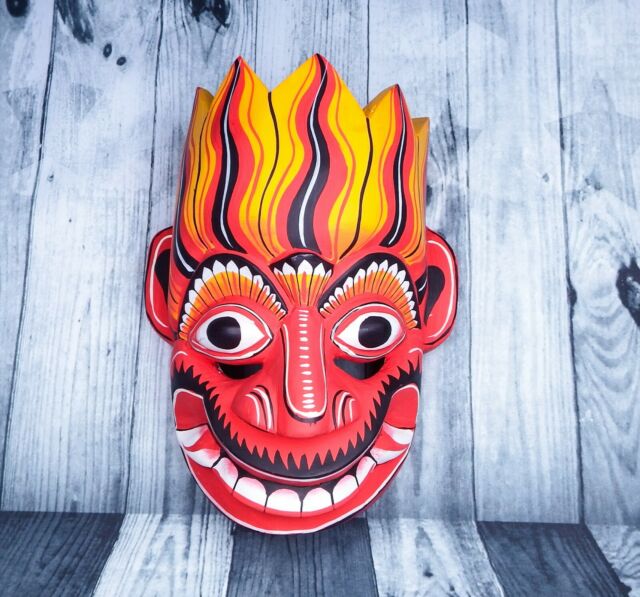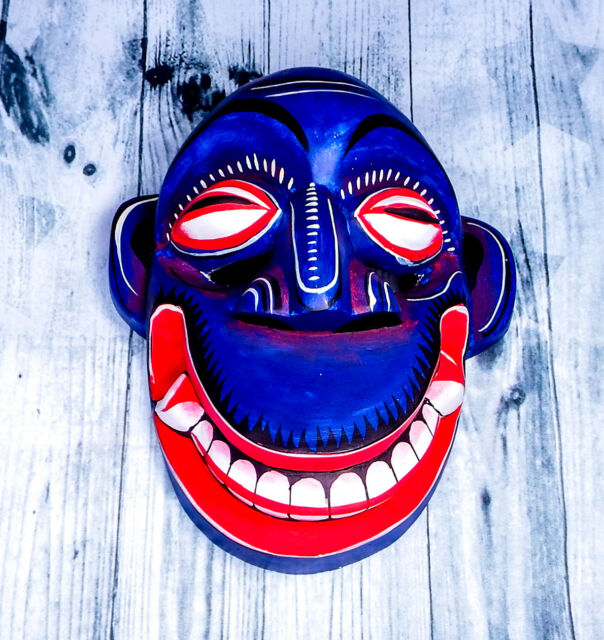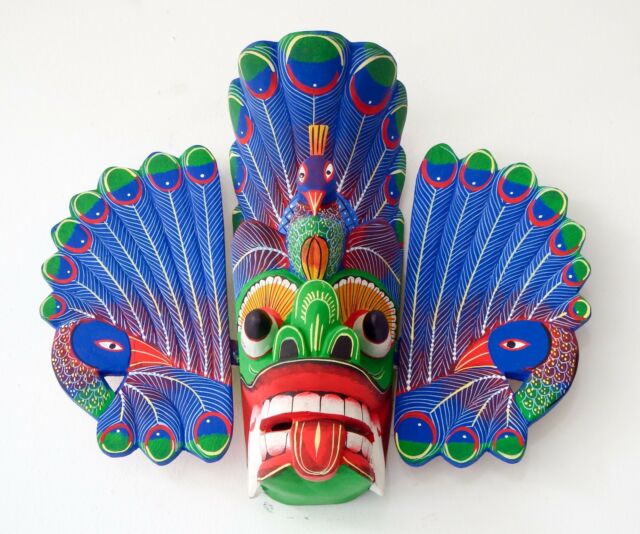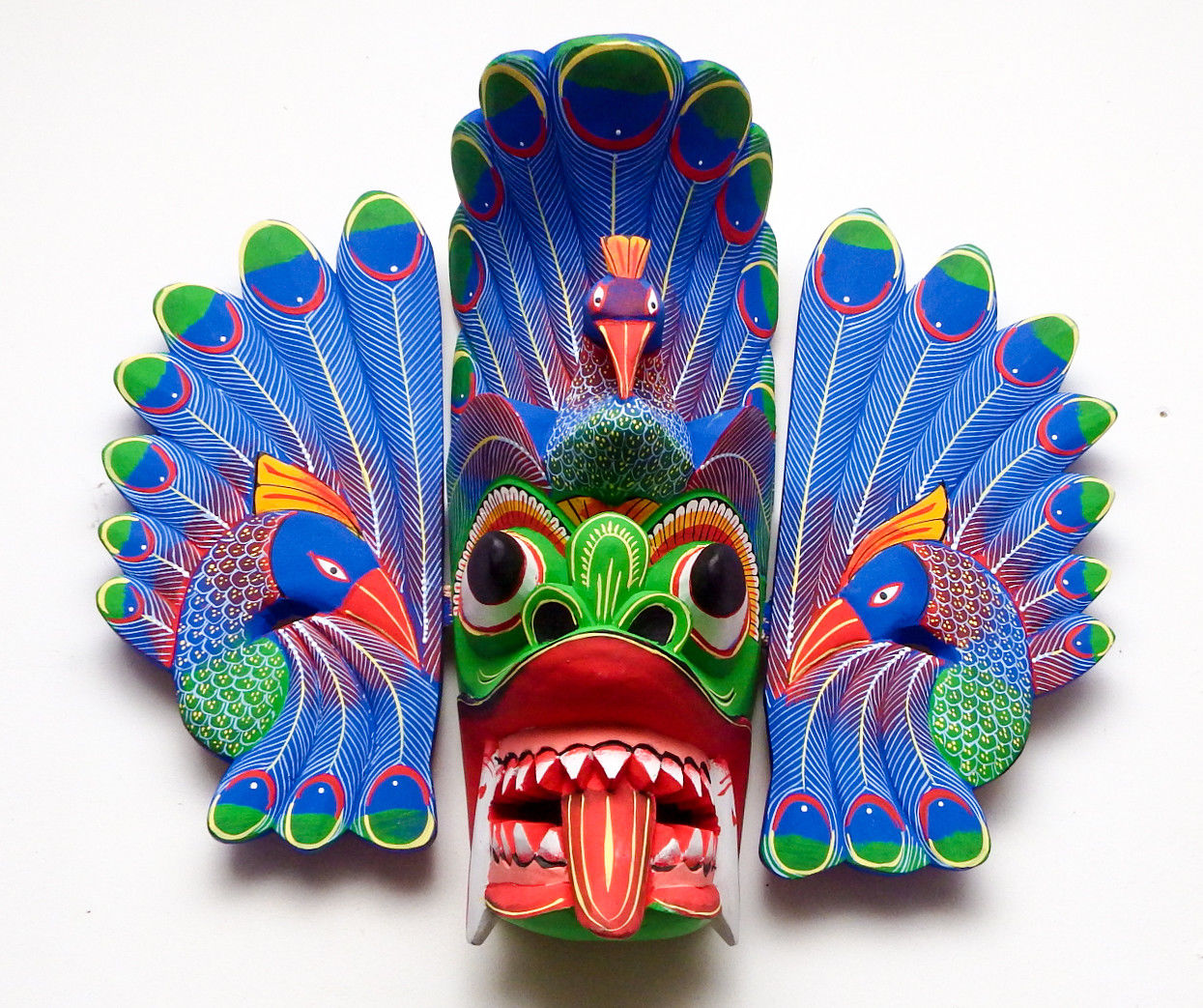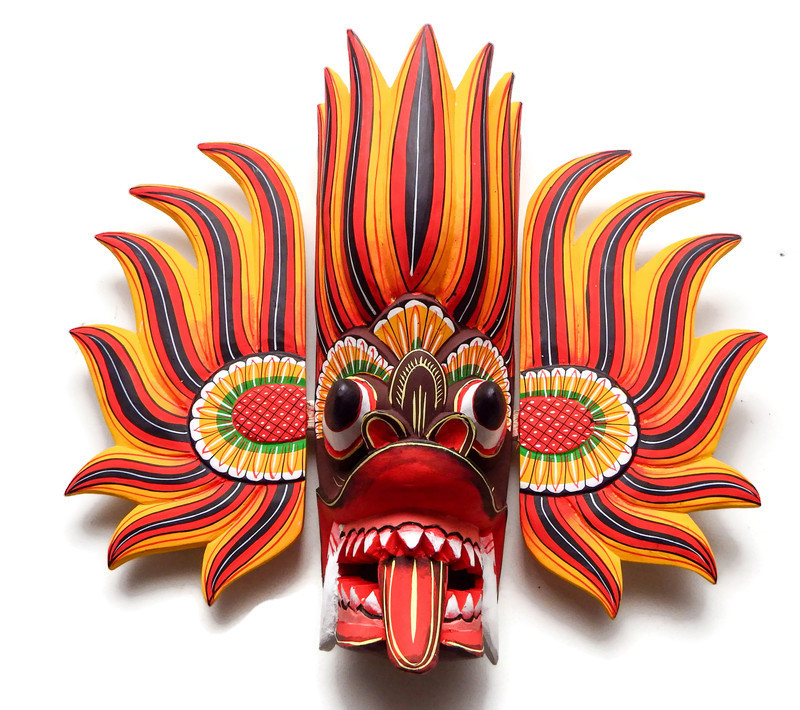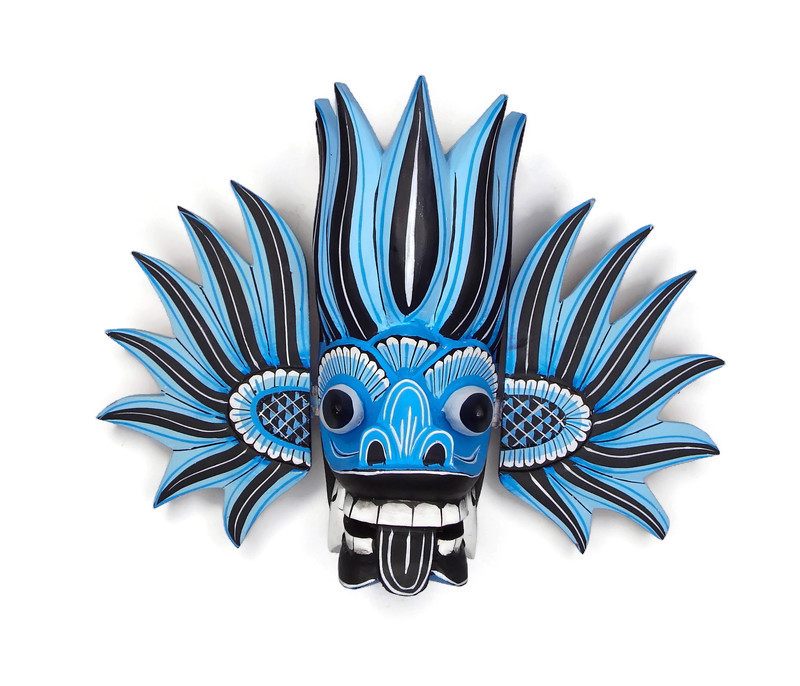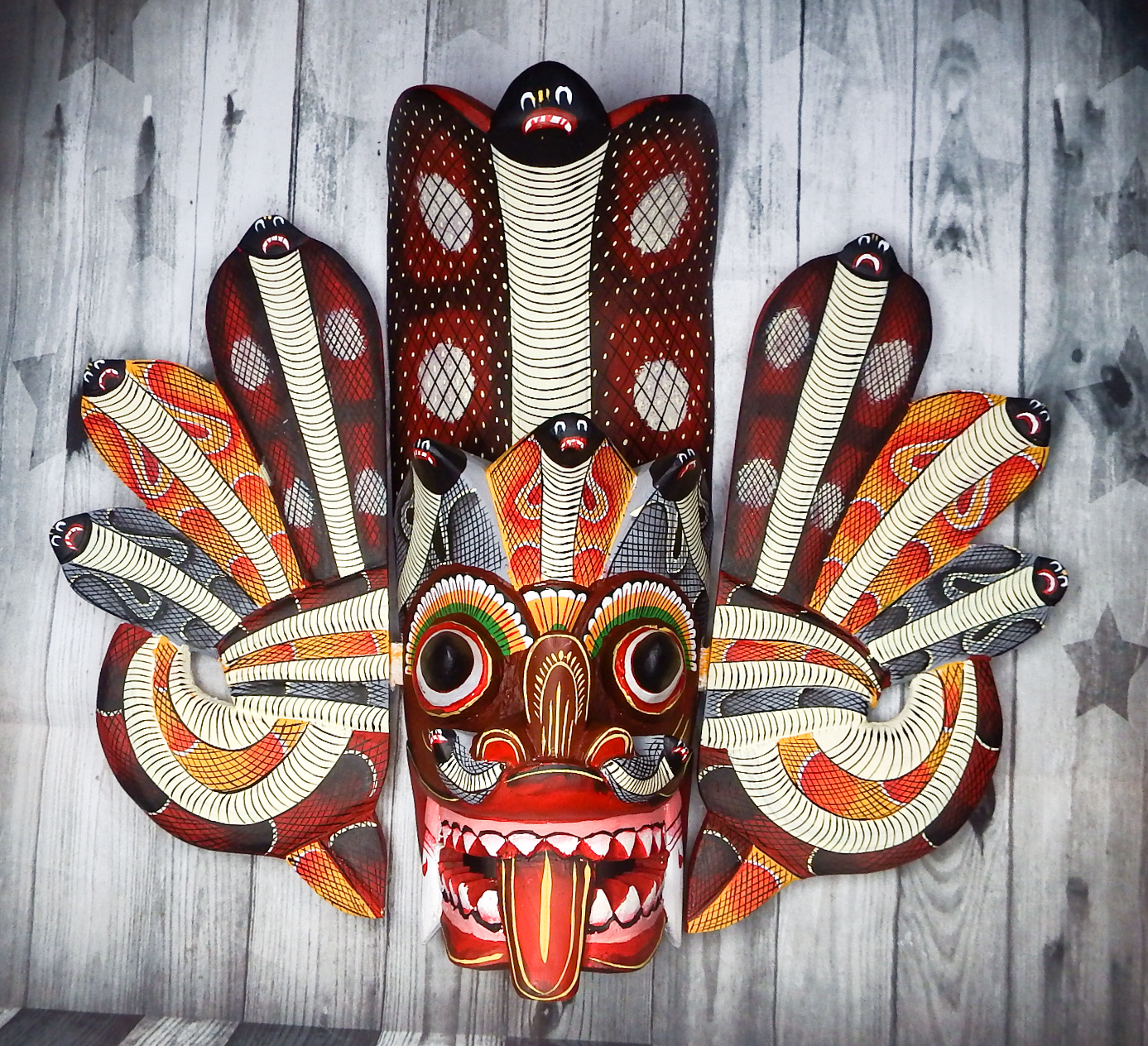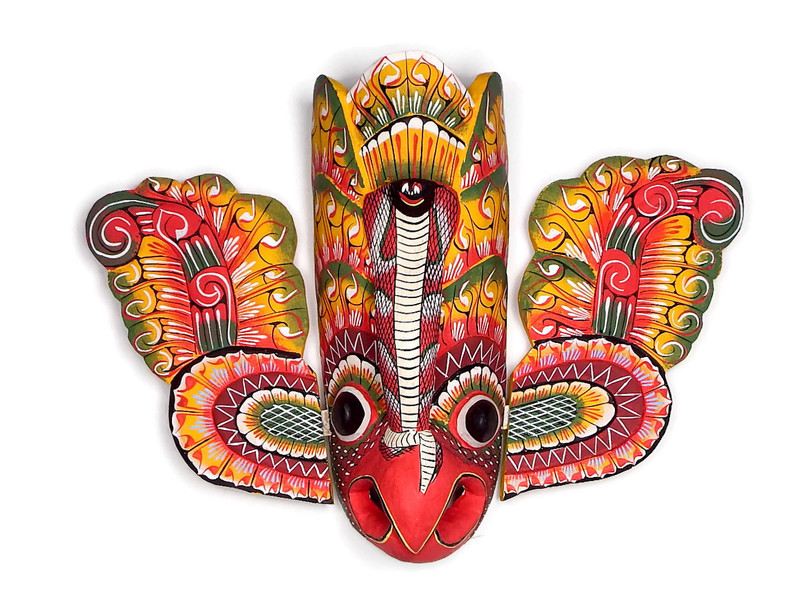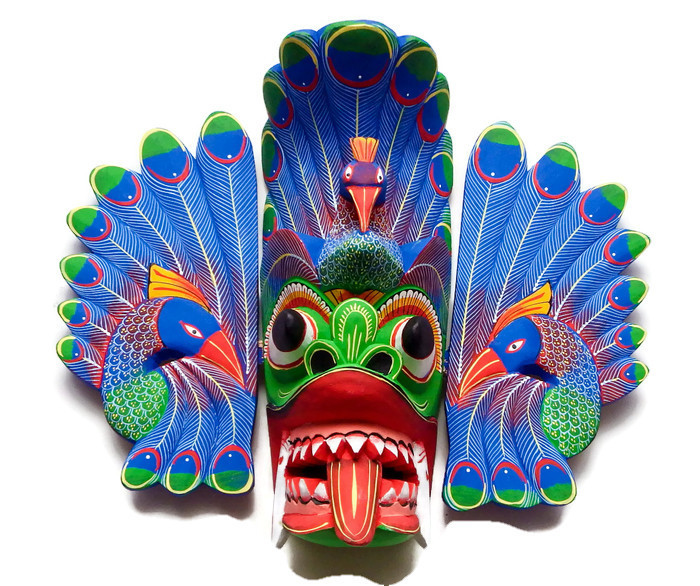Sokari of Sri Lanka
Those who have lived in or have visited Sri Lanka might have had the good fortune of witnessing various age-old ritualistic pageant or “ritual dramas” conducted with great solemnity and ceremony by the village folk. Of these ritualistic and dramatic spectacles Devil Dancing and Kolam which are performed mainly by masked dancers, are two of the traditional Sinhala dances which have survived to this date in the Western littoral strip of the island (Goonetilaka, 1970).
Yet another variety of rural theatre called Sokari which is ascribed to the cult of Goddess Pattini (Goddess of purity and fidelity), is still performed on rare occasions mostly in the mountainous areas of the country. Even in this form of spectacle two or three characters wear masks as a means of disguise.
Places like Laggala, Hanguranketa, Uda Peradeniya, Hewaheta, Meeruppe, Talatu Oya, and Matale have been famous for Sokari performances. Of late, Sokari appears to have survived in such distant places as Dambulla and Badulla.
Sokari is the name of a woman. She is of Indian origin. She is barren. Sokari comes to Sri Lanka for the purpose of praying to God Kataragama for the born of a child. The story of Sokari and her husband Guru Hamy is the Sokari narrative.
There are several verse scripts on the story of Sokari, popularly known as Sokari Amma (Barnett, 1917; saratchandra 84-94; Nevill, 1954). Although these scripts differ in the details the kernel of the story is the same.
Sokari, Kolam and Nadagam are some of the most popular cultural dramas in Sri Lanka. From these, Sokari is the most popular because it was very close to the day-to-day life of villagers. This is an independent cultural event which is also conducted to bless the people.
The main purpose of performing this drama is to give priority to the religious connection between people, bring prosperity and provide some fun to the people.
This type of drama is very popular in hill country areas such as Badulla, Hanguranketha, Matale and suburbs. Its origin differs from province to province. According to Professor Ediriweera Sarathchandra's book Sinhala Gami Natakaya, the origin is as folows:
In the country named Kasi, there was a man named Guruhami. He got married to a beautiful woman named Sokari and hired a servant named Pariya. They started moving from country to country in search of a job.
At some point, they decided to come to 'Sinhala Deshaya' (Sri Lanka). They left their home at an auspicious time and after passing seven oceans, arrived in Sri Lanka.
First of all, they went to worship Sri Pada. Then, they went to a village named Thambaravita where they decided to settle down and build a house. Then, Guruhami went to the village in search of some rice, but because he didn't know the language, he faced a lot of difficulties. However, he managed to find some rice, but suddenly realised that there was no water to cook it with. Thus, he had to go to the village again.


This time, a dog which lived in the house of the village doctor, bit Guruhami. He somehow managed to come home . He lay down and rested a while. Pariya, who thought that Guruhami was dead, tried to use the opportunity to get closer to Sokari. Sokari got angry with Pariya,and ordered him to call the doctor.
When Pariya went to the doctor, the doctor refused to pay a visit unless Sokari herself came and asked him to see the patient.
Then, Sokari went and brought the doctor. The doctor treated Guruhami until midnight, and left the house with Sokari at dawn.
Guruhami, who was heart-broken, complained to God Kataragama about the tragedy. Then, he was given a sign to find Sokari. Guruhami traced her to the doctor's place. He took her back home and beat her, but after sometime, he forgave her and advised Pariya to take care of Sokari from then on.
Where and how it is staged
Usually, Sokari is staged in a 'kamatha' (in the paddy field). A pestle is kept in the middle of the stage and a lantern is lit on it to light up the place. The place where the drama is staged is marked with cords.
A 'malpala' is prepared on a side. 'Gurunnanse' is there with a book, while a horane player, thalampota player and drummer help the Gurunnanse to read the story.
Characters of the drama
1. Guruhami
2. Sokari
3. Pariya-Rama
4. Doctor
5. Soththana
6. Hettiya
7. Carpenter
8. Matchmaker
9. Snake charmer
10. Kali amma
Language and communication used...
All conversations in the drama include a mix of Tamil and Sinhalese. They use words with double meanings most of the time. Similar funny phrases are used in the 'Daha Ata Sanniya', 'Kola Sanniya', 'Kohomba Kankariya' and 'Gammadu'. Some events in the above dramas are very similar to those of Sokari'.
This is a very interesting cultural drama which was staged more often during the good old days. But it is very rarely seen nowadays. Some of our old cultural rituals are dying out now and that's why we are carrying these articles to increase your awareness about them.











